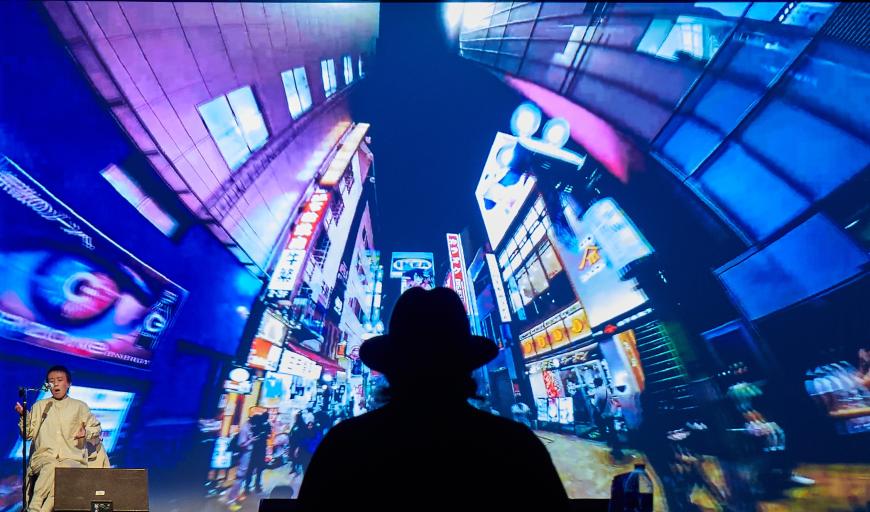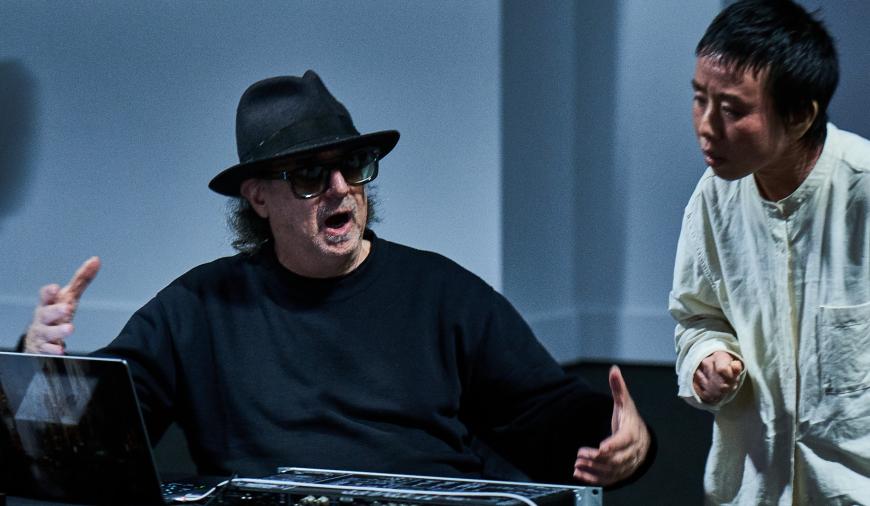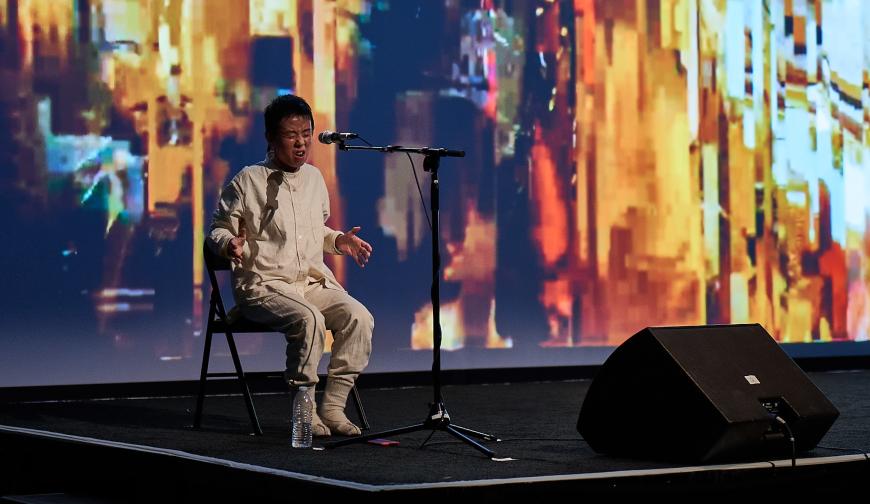
If Carl Stone, having just retired from teaching, is looking for another gig, he might consider tourism. The composer, a pioneer of live computer music, has split the last few decades between California and Japan. In Re:gendo, his new eight-channel multimedia composition, he displays the riches of his travels.
The immersive hour-long work, whose premiere (in collaboration with Gray Area, a cultural hub of San Francisco’s Mission District) capped off the 27th season of the Other Minds Festival on Sunday, is a love letter to Tokyo. You’ll want to go there, but then you’ll want to go anywhere Stone depicts — I’d like to see what he could make of Daly City.

Throughout the prologue, drones shimmer, each effusion zooming us (with video processing by Stone and Yuichi Itou) further into Tokyo. Stretched to delicate spikes, visuals of staircases and alleyways are as revelatory as geodes. When the images morph into coherence, you realize it’s the lack of people that make them striking. Stone shot the photos on his pandemic-era night walks, but this deserted Tokyo is no wasteland. It’s just a different kind of life with which this landscape teems. Trees pulsate, gates gleam, and even the drab high-rises twinkle in Technicolor.
After such unabashed wonderment at emptiness, humans do seem like encroachers. In the piece’s second section, Stone layers indistinct snatches of talk, sometimes obviously looped, other times repeated only as many times as a train announcement or a hawker’s call would be. Like city life itself, the music is whimsical and exhausting to parse; with no visuals, we’re left to contemplate in the dark.

The title Re:gendo has no meaning. Stone picked it at random from a list he keeps of restaurant names. It’s with this same sensibility that, in the piece’s final section, live vocalizations by the Tokyo-based singer-improviser Akaihirume express — what? Out of the reprised drones, more multicolored every minute, she scoops out certain pitches to hold, or they come from her. It all mushes together, the bleats pure stimuli, like Clare Torry’s vocals on Pink Floyd’s “The Great Gig in the Sky” but raised to the nth degree.
Neon karaoke signs, lanterns, McDonald’s — the people are out again in the Tokyo we know. Aiko Tanaka’s and Erick Gibson’s drone photography here is the most realistic imagery we’ve seen so far. But such a privileged viewpoint, only recently having trickled down from car-commercial vistas and CGI battle scenes, can’t help but make magic of even the most mundane city scenes.
Columns of skyscrapers wiggle like shiny pompom strands. Positions glitch, as if one digit in a string has slipped off. The passersby walk streets that spin into one colossal circle, like a painting of samsāra or a hamster wheel. Ironically, it’s not the composer’s ground-level snapshots but the drone’s detached panoptic view that captures the city’s humanity. “That was a mistake,” Stone said when a rude blare ruined the heavenly fade-out.




